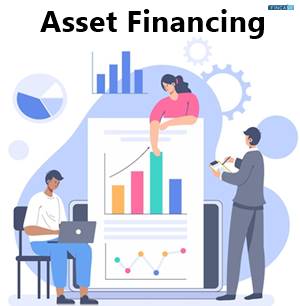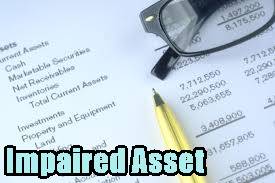
Table of Contents
What is Asset Financing?
When a business organisation uses its assets listed on the Balance Sheet to raise finance for business operations, it is called asset financing. These may include assets, like -
- Property, plant, and equipment,
- Long-term investments
- Inventories
- Receivables, etc.

In short, the organisation can receive financing from a third party against any owned assets.
Why go for Asset Financing?
Various finance sources have emerged in the dynamic business environment, giving birth to more innovative ones. Asset financing is one of them. This mode of acquiring finance is way different from the traditional methods. The typical ‘taking a loan on a high-interest rate’ policy is now replaced by newer ways, thanks to asset financing. To understand the importance of asset financing, let’s have a glance at some of its advantages:
Easy to Obtain Finance
Compared to typical Bank loans, this source of finance is far better. Banks go through a lot of checks and assurances. The possibility of getting a bank loan is low if the company's Credit Score is not good. However, there is no such thing as asset financing.
Best Option for Startups
Getting bank loans is even more difficult for startups, as banks question their credibility and ability to repay because of the uncertain future growth. Asset financing comes to the rescue in such cases.
Lower Interest Rate
The interest rates on this kind of finance are comparatively lower compared to most of the other sources of finance, especially bank loans.
Quick Finance
Obtaining finance is not an easy task. Rather, it is a long and tedious project, especially when you are dealing with a bank or other financial institution. But here, too, asset financing is faster and better than the other available options.
Talk to our investment specialist
Disadvantages of Asset Financing
But everything is not rosy about asset financing. There are some drawbacks as well, which are as follows:
Risk of Losing Asset
Obtaining finance through asset financing might mean either the asset is mortgaged or not. But in either of the cases, the finance provider has the right to seize the asset in case of a Default on the part of the organisation. Thus, there is a prospective risk of losing a valuable asset.
Not For Long-Term
This source of finance is one of the best when it comes to fulfilling the working Capital requirements. But it might not be that lucrative when it comes to acquiring finance for the long term.
Lower Valuation of Asset
The amount of finance obtained by asset financing depends upon the value of the asset offered against it. At times, the lender might undervalue the purchase and extend a lesser loan amount.
What is the Difference Between Asset-based Financing and Asset Financing?
| Basis | Asset Financing | Asset-Based Financing |
|---|---|---|
| Meaning | It means using the assets already owned by the business to generate finance from outside | It means buying a new asset by an alternative way of financing, such as hire purchase and Lease financing |
| Motive | The motive is acquiring finance with the help of an asset | The motive is acquiring an asset |
| Ownership of Asset | The asset is owned by the organisation | The aim itself is to acquire the ownership of an asset |
Conclusion
No doubt, asset financing excels in many aspects when compared to other sources of finance. But it is always a better option to consult a finance expert to ascertain the feasibility of this option for your business.
All efforts have been made to ensure the information provided here is accurate. However, no guarantees are made regarding correctness of data. Please verify with scheme information document before making any investment.












